 Dan Buettner is a National Geographic Fellow, the #1 New York Times Bestselling Author of five books on longevity and happiness, and a three-time Guinness World Record holder for long-distance cycling. In 2003, Buettner founded Blue Zones, where he has studied communities with increased longevity, including Ikaria, Greece; Loma Linda, California; Sardinia, Italy; Okinawa, Japan; and Nicoya, Costa Rica. His study of longevity has been adapted into a limited Netflix series ‘Live To 100: Secrets Of The Blue Zones’. I was fortunate enough to get hold of Dan and ask him a couple of questions about his work.
Dan Buettner is a National Geographic Fellow, the #1 New York Times Bestselling Author of five books on longevity and happiness, and a three-time Guinness World Record holder for long-distance cycling. In 2003, Buettner founded Blue Zones, where he has studied communities with increased longevity, including Ikaria, Greece; Loma Linda, California; Sardinia, Italy; Okinawa, Japan; and Nicoya, Costa Rica. His study of longevity has been adapted into a limited Netflix series ‘Live To 100: Secrets Of The Blue Zones’. I was fortunate enough to get hold of Dan and ask him a couple of questions about his work.
Interestingly, not long after wrapping up the interview, David, the editor of Dave’s Travel Corner, came to visit me in Malaysia and shared the news of the passing of the oldest person in the US, Edie Ceccarelli, who lived to the age of 116. Throughout history, humans have been finding ways to achieve longevity. Back in China’s Qing dynasty, the tyrannical emperor was hell-bent on finding a magic potion to live an immortal life. With the advanced modern era, there is a growing emphasis on pursuing a healthy and long life. Let’s find out what Dan has to say in the following interview with me.
Q. What led you to explore the secret of longevity and healthy living across various regions and cultures?
I had already been traveling and somewhat stumbled into it. It all began in the spring of 2000 as I led a series of educational projects called “Quests,” during which a team of scientists investigated some of Earth’s great puzzles.
Intrigued by the exceptional longevity of Okinawans, I delved into a quest to unlock their secrets to health and long life. For ten days, we launched into research, exploration, and analysis. Five years later, I led a new team to revisit Okinawa.
In my recent cover story for National Geographic about the “Secrets of Long Life,” I profiled three areas of the world with focus on of some of the world’s longest-lived people-areas we dubbed “Blue Zones”. I was determined to delve deeper into the lifestyle of Okinawa.
As we explored, we were always thinking, how can these teachings be applied to our communities? This led to the birth of the Blue Zones Project. We took the evidence-based common denominators found in all the Blue Zones and implemented them in communities across the United States. We do not aim for drastic lifestyle changes. Instead, we want to make small adjustments to make the healthy choice the easy choice for people in their communities.
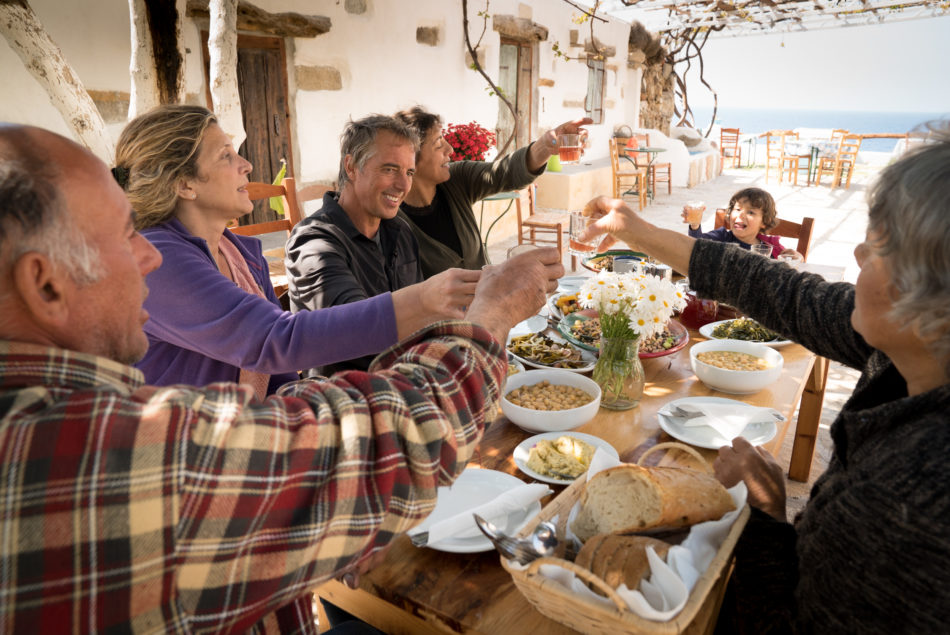 Q. Loma Linda, Nicoya, Sardinia, Ikaria, and Okinawa. Tell us about your experiences in these places and what similarities you notice among those who live long lives, especially regarding diet and quality of life?
Q. Loma Linda, Nicoya, Sardinia, Ikaria, and Okinawa. Tell us about your experiences in these places and what similarities you notice among those who live long lives, especially regarding diet and quality of life?
We found 9 evidence-based common denominators among all places. We call them the Power9.
1. Move Naturally: Instead of pumping iron, running marathons, or joining gyms, the world’s longest-lived people opt to live in environments that constantly nudge them into moving without thinking about it. They grow gardens and don’t have mechanical conveniences for house and yard work.
2. Purpose: The Okinawans call it ‘Ikigai,’ and the Nicoyans call it ‘plan de vida,’ which means ‘why I wake up in the morning.’ Living every day with a sense of purpose can increase life expectancy by up to seven years.
3. Down Shift: Stress causes chronic inflammation, associated with every major age-related disease. Even people in the Blue Zones are not immune to stress, but what they have that most people don’t is their daily routine to destress. Okinawans take a few moments each day to remember their ancestors, Adventists pray, Ikarians take a nap, and Sardinians do happy hour.
4. 80% Rule: The Okinawans live by the 2500-year-old Confucian mantra ‘Hara hachi bu,’ which reminds them to stop eating when their stomachs are 80 percent full. The 20% gap between not being hungry and feeling full could be the difference between losing weight or gaining it. People in the Blue Zones eat their smallest meal in the late afternoon or early evening, and then they don’t eat any more for the rest of the day.
5. Plant Slant: Beans, such as fava, black, soy, and lentils, form the foundation of the majority of centenarian diets. Meat, mostly pork, is consumed on an average of only five times per month, with serving sizes typically kept to 3-4 oz., approximately the size of a deck of cards.
6. Wine @ 5: People in all Blue Zones (except Adventists) drink alcohol in moderation on a regular basis. Moderate drinkers outlive non-drinkers. The trick is to drink 1-2 glasses per day (preferably Sardinian Cannonau wine), with friends and/or with food. And no, you can’t save up all weekend and have 14 drinks on Saturday.
7. Belong: All but five of the 263 centenarians we interviewed belonged to some faith-based community. Denomination doesn’t seem to matter. Research shows that attending faith-based services four times per month will add 4-14 years of life expectancy.
8. Loved Ones First Successful centenarians in the Blue Zones put their families above anything. This means keeping aging parents and grandparents nearby or in the home (It lowers disease and mortality rates of children in the home too.). They commit to a life partner (which can add up to 3 years of life expectancy) and invest in their children with time and love (They’ll be more likely to care for you when the time comes).
9. Right Tribe The world’s longest-lived people chose–or were born into–social circles that supported healthy behaviors, Okinawans created “moais”– groups of five friends that committed to each other for life. Research from the Framingham Studies shows that smoking, obesity, happiness, and even loneliness is contagious. The social networks of long-lived people have favorably shaped their health behaviors.
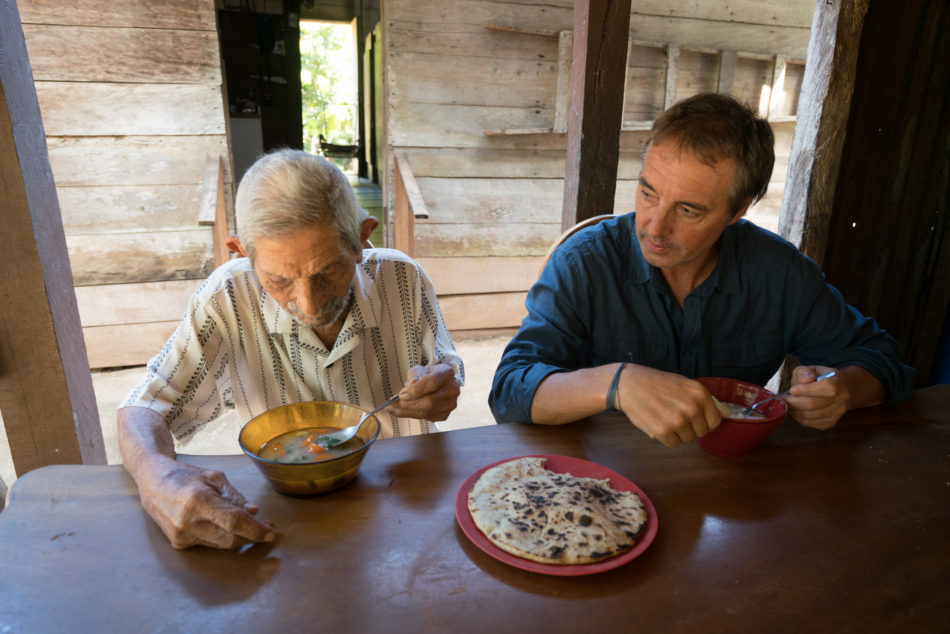 Q. During your time in the Blue Zones, what experience inspired your approach to diet and inner happiness in ways you hadn’t thought of before?
Q. During your time in the Blue Zones, what experience inspired your approach to diet and inner happiness in ways you hadn’t thought of before?
I would say what was so mind-blowing to me was the purpose that every centenarian had. This was particularly evident in the kitchen, where that purpose might involve cooking for their family or passing recipes down to other generations.
In the United States, people often see retirement as a time to sit around, relax, play some golf, and do anything but work. In the Blue Zones, the elderly feels a sense of purpose and responsibility to help raise the kids and support the community.
This purpose is their reason to get up in the morning and can add up to 7 good years to your life. One of the most challenging times in your life is the year you retire – often accompanied by a sudden lack of purpose.
Q. What advice do you have for visitors to the Blue Zones to make the most of their experience and learn from the locals?
Go slow. Walk or bike the city, don’t jump into a car and speed to your next destination. Spend time chatting with locals. Look for the spots that locals are eating or hanging out. Try to find out about the local customs and celebrations. If you go to the new restaurant or new event, you will often miss what was originally there that led to long happy lives.
Q. Besides these five blue zones, have you discovered any other places where people are adopting the Blue Zones lifestyle?”
You’ll have to wait for my next book!
Q. In your blog post ‘Creating a Blue Zones Retreat,’ you mentioned that we all can all create our own Blue Zones Retreats – Moving Naturally, Wine at 5, Purpose, etc. Can you offer practical examples or recommendations for those interested in creating their own unique Blue Zones-inspired retreats?
Of course, as mentioned in the blog, picking a vacation with physical activity as the main event is great (skiing, hiking, walking around town, biking, yoga), not sitting by the pool. Going on these trips with friends and family who share the same goal as you and whom you enjoy being around is also very important.
Disconnecting from social media, if you are just thinking about what picture to post on your social media, you won’t be fully immersed in your experience. Find time to relax (sleep in, get a massage, take an afternoon nap). Eat healthy but don’t be afraid to splurge on a meal here or there. I find that if you are being active during your vacation, you often want to eat healthy anyway.

Q. Could you share a time when you effectively organized your own Blue Zones Retreat and what you learned from the experience?
Each summer I host a Pickleball tournament for my friends at my lake home in Wisconsin. I invite old friends and sprinkle in a few people I have become close to over the last year.
The first night we do happy hour by the water and ensure everyone gets to know each other, the next day is a bracketed pickleball tournament in the morning with water sports to follow in the afternoon. All the meals are plant based and people are encouraged to leave their phones in the car. By the end of the short weekend, everyone has made a few new friends, we have been outside getting fun exercise the entire time. It’s a great way to curate your own blue zones retreat.
Q. I understand you have conducted the Blue Zones experiment in a US town, inspired by Finland’s North Karelia Project. What challenges do you see in people adopting the Blue Zones lifestyle, and do you think widespread adoption is likely in the near future?
I would argue that if you are overweight and unhealthy, it’s probably not your fault. It’s because of the environment that we’ve built around ourselves for ease.
The Blue Zones Project is currently at work in 72 communities across the United States. The framework came from our research in the original Blue Zones areas, where good health and longevity ensues from the right environment and not from people trying to diet and exercise.
Instead of focusing on individual behavior change like diet and exercise, we focus on changing the environment so people can live healthier lifestyles (where the healthy choice is the easy choice). In America, our environments are usually set up exactly the wrong way: unhealthy food is everywhere, and our communities are built for cars, not walking or biking.
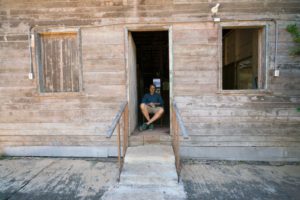
We work with cities and their schools, companies, faith communities, grocery stores, and restaurants to make healthy choices easier. This can include passing anti-smoking policies, creating sidewalks and bike lanes so children can walk to school and adults can commute to work, removing soda and candy from school vending machines, and improving or adding healthy options to grocery stores or restaurants.
We help set up groups and events so people socialize more and get to know their neighbors or coworkers, and we help them find their sense of purpose, usually through some kind of volunteer work. Just by living in the properly designed community, though, you can raise your physical activity level by about 30 percent without even realizing it. And that’s what we help people do.
The most difficult factor is helping people and communities make the paradigm shift from focusing on telling people to diet and exercise to focusing on creating the right environment for people to live healthy, happy lives. Change is hard for people, so such a new approach can make people nervous. But I am optimistic, because Blue Zones Project has been able to improve the health of large populations of people, and it’s something that we need as America is in the grips of a health crisis. With the right leaders and boots on the ground, communities and entire cities can be healthier. And that’s good news. We would love to expand to other countries and eventually worldwide.
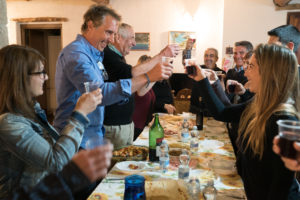
Q. We’ve seen research on how travel can positively impact longevity. Can you share how your experiences traveling around the world have influenced your well-being and happiness?
I’m an explorer so I think everyone should get out and explore the world. My dad helped instill this in my brothers and me at a young age when he’d take us camping in Northern Minnesota for weeks at a time. This love of the outdoors helped inspire my world record setting bicycle trips around the world. When you are traveling you experience so many different cultures, foods, and lifestyles. It opens your eyes and helps you become more empathetic and understanding. You also get a broader view of the world outside of your small community and you can bring home powerful principles you’ve learned along the way.
Q. Your messages for our readers before we wrap up this interview?
I received this advice from the happiest man I met in the entire world, Armando Fuentes – Eat without gluttony, drink without getting drunk, love without jealousy and occasionally, with great discretion, misbehave.
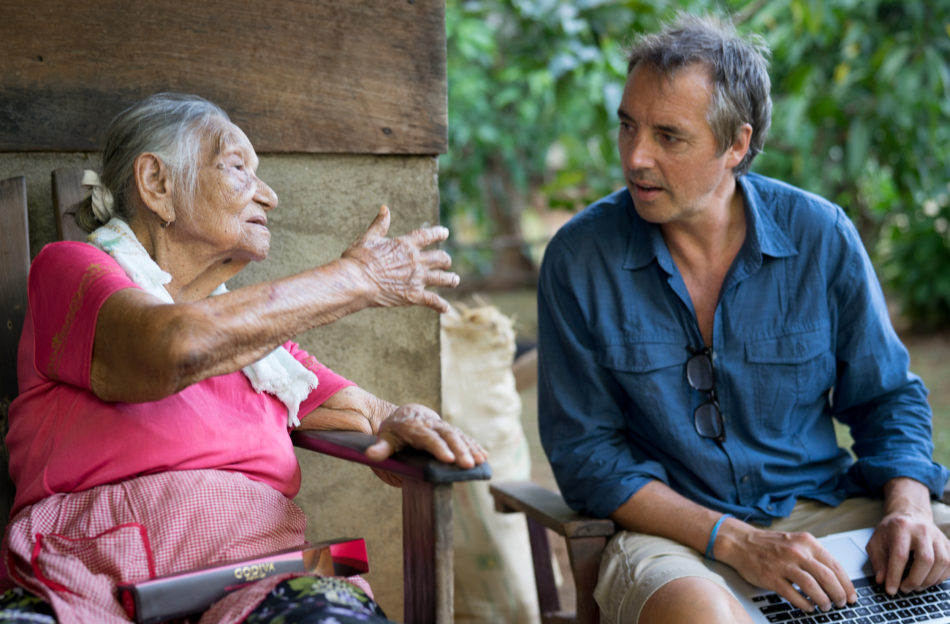 Photos by Dan Buettner
Photos by Dan Buettner
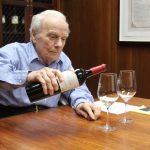




Leave a Reply